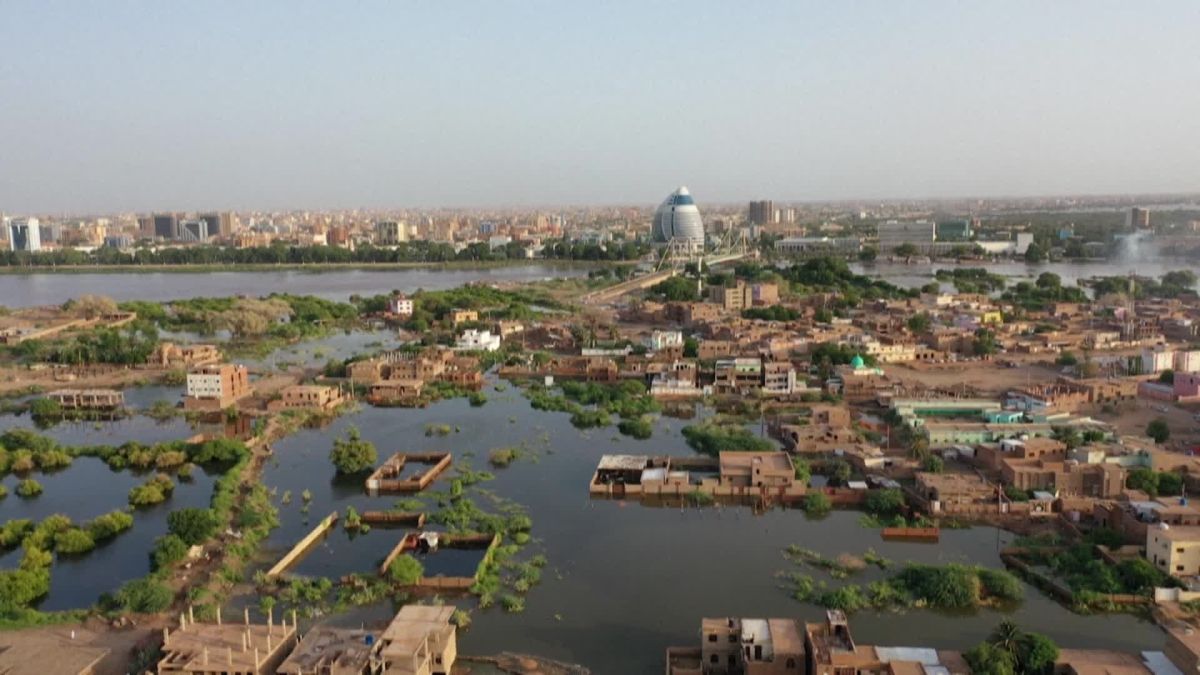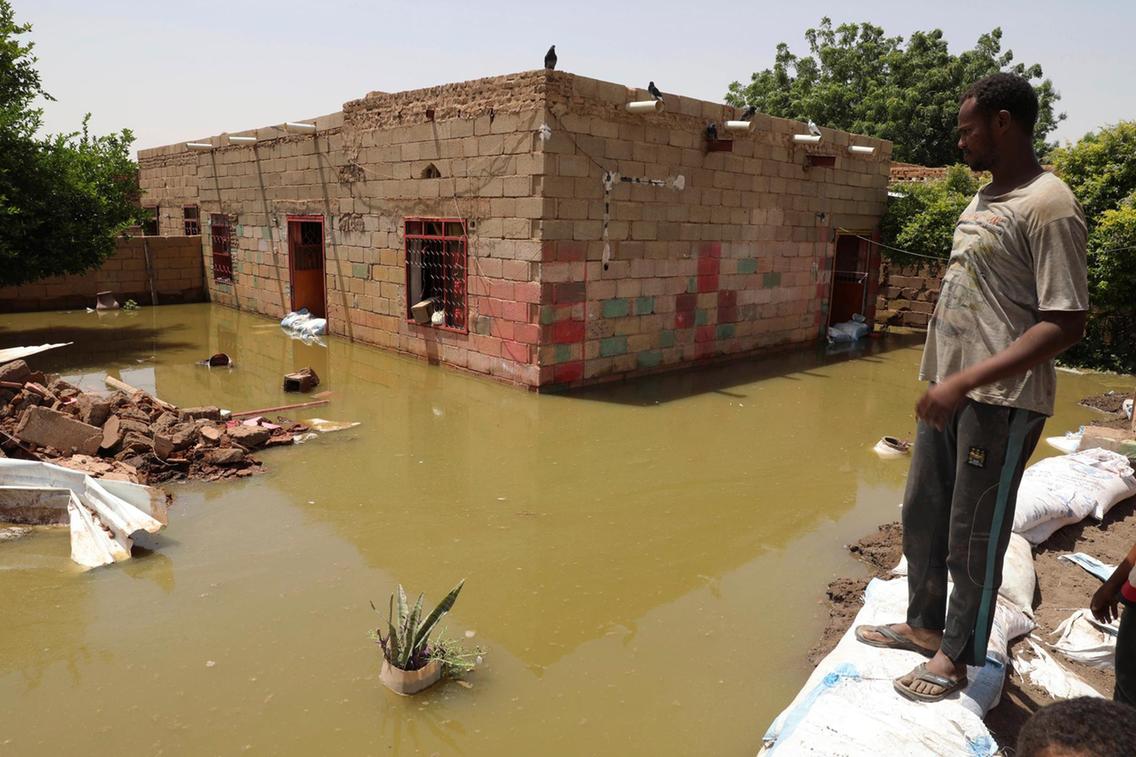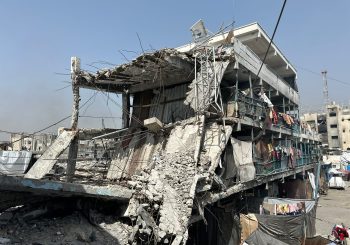
Over the past weeks, heavy rainfall in Sudan has caused river swells and floods across the country. According to news sources, floods hit 16 out of the 18 states that make up Sudan, destroying over 100,000 homes and killing around 100 people and injuring 46. An estimated 500,000 people have been affected or displaced by the floods, according to the Sudan Humanitarian Aid Commission.
They are considered the worst floods to hit Sudan in 100 years, raising water levels in the Blue Nile to an unprecedented 17.58 meters, which prompted the Sudanese government to declare the country a disaster area and implement a three-month state of emergency. The devastating floods have also hit South Sudan.
Heavy damage to the country’s infrastructure has been reported and observers have also indicated that the natural disaster has compromised Sudan’s safe drinking water, estimating that around 2,000 water sources have now been contaminated or otherwise compromised. These water shortages could affect more than 100,000 people.
Autumn rain season in Sudan usually starts in June and ends in October, however experts are saying that the country is facing erratic whether this year due to the climate change.
In addition to the loss of life and billions of dollars’ worth of infrastructure and property damage, Sudan stands to lose the ruins of Al Bajrawiya, home to the Meroe pyramids, a UNESCO World Heritage site. Widely considered an archeological gem, the ruins of Al Bajrawiya were once a royal city of the Meroitic empire, according to Marc Maillot, head of the French Archaeological Unit in the Sudan Antiquities Service, France 24 reports.
This disaster comes as Sudan navigates a difficult political transition after decades of brutal autocratic rule under former President Omar Al Bashir and threatens to derail the country’s development and the Sudanese people’s democratic aspirations.
Donate and/or Volunteer
Donating and volunteering are two of the most effective ways to directly help during a humanitarian crisis. Since the floods, several initiatives were announced by activists, aid workers and relief organizations both on the ground and overseas.
One of the most widely credited for its efforts since the beginning of the crisis is the Nafeer Initiative, which is providing much-needed aid to those affected by the floods, including food and shelter to those who have been displaced, as well as surveying and assessing the damage caused by the deluge.
Similarly, Awtad, a regional charity organization based in Uganda, has recently mobilized to provide aid to those hit the hardest by the floods and the heavy rainfall and rebuilding homes for those who have been displaced. You can also support the organization’s work by volunteering.
Another organization working to help Sudan and South Sudan is Islamic Relief USA (IRUSA). The organization is currently raising donations for its emergency response efforts, which are being overseen by IRUSA’s teams on the ground in the affected regions.
Raise Awareness about Anti-Blackness in the MENA Region
Raising awareness about the events in Sudan can go a long way in helping the Sudanese government and civil society, as well as the international community, manage this disaster and, hopefully, ensure that the country won’t be as vulnerable to these weather conditions in the future.
This hasn’t been the case for Sudan and South Sudan, where the devastation has largely been underreported in the media. When compared to the regional response to the Beirut Blast, many commentators and observers noted a pattern of public apathy towards the humanitarian crises in Sudan and South Sudan and many have attributed this complete disregard for Black life to a culture of anti-Black racism in Arab and North African societies.
Educate Yourself and Others about Climate Change
The crisis in Sudan and South Sudan is indicative of changing weather patterns, according to climate scientists. Experts say that these latest floods are the worst to hit Sudan in 100 years, exceeding the record-setting rainy seasons of 1946 and 1988. State-owned news agency SUNA confirmed that sources in the Sudanese government expect worsening conditions.
“This year we have seen an increase in the amount of rainfall because of climate change and so the Nile has flooded more than before. In addition, a lot of trees have been cut down to make place for residential areas near the Nile, affecting the valleys where the water would flow through,” one climate change expert told Al Jazeera.
This disaster is yet another reminder that climate change is a real, fast-approaching crisis that threatens food and water security in the Middle East and Africa. According to a 2019 United Nation’s Environment Programme report, the Sudanese capital experienced “serious environmental degradation due to extensive deforestation and droughts, which have conspired to make it vulnerable to climate-related hazards.”
The international agency warned that floods, sandstorms and heatwaves pose a serious threat to the city of Khartoum and its population of 6.3 million people.
This was also predicted in 2016, when climate scientists and climate change experts warned that Sudan is particularly vulnerable to the effects of climate change and said that the environmental crisis can render parts of the country uninhabitable.






Comments (2)
[…] What Is Happening in Sudan and How Can You Help? […]
[…] What Is Happening in Sudan and How Can You Help? AUC Graduate Exposes Student Revenge Porn Group […]